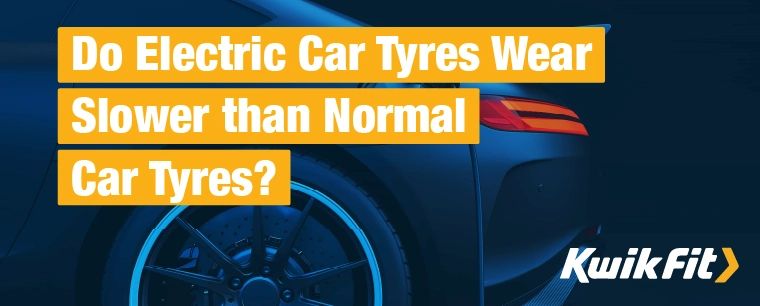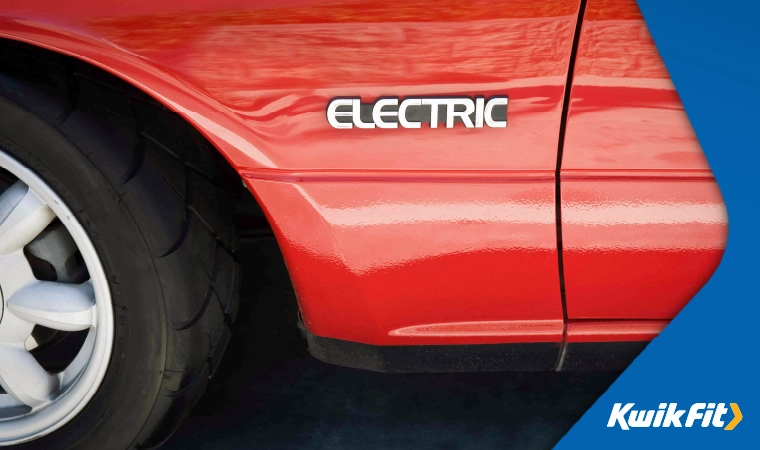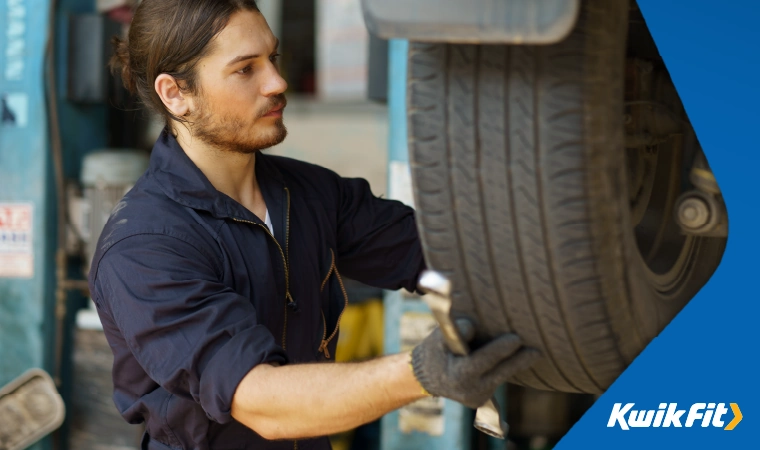Do Electric Car Tyres Wear Slower than Normal Car Tyres?
| Monday 18th September 2023 10:30am

As the popularity and omnipresence of electric and hybrid vehicles grows on Britain’s roads, people are increasingly wondering how they compare to regular combustion engine vehicles.
Since electric cars are a fairly new phenomenon, we don’t all know exactly how they measure up to our petrol-guzzling regular vehicles. Do they last longer? Do they cost more? And do their tyres wear out sooner?
Read on to find out exactly how much life you can expect to get out of your electric car tyres and why.
Tyre wear on regular vehicles
When you buy a new car, the tyre tread depth should be about 8mm deep. Over time, however, this will lessen to about 3mm — after which it is advised that you replace your tyres to stay safe. Since your car’s tyres are the only constant point of contact between you and the road, it is natural that they wear down over time.
However, anything below 1.6mm is not only unsafe but illegal! When tread depth is below 3mm, there is simply not enough groove space to effectively channel surface water away from the path of the vehicle. As a result, aquaplaning may occur as your tyres lose grip and contact with the surface of the road.
In dry conditions, reduced tread depth can also severely elongate stopping distances since there is reduced friction between the tyre and the road’s surface.
How do you check the tread depth on your EV tyre?
It is recommended that you inspect the quality of your tyres every 2 weeks, especially if you drive long distances. Luckily for you, there are a number of simple ways you can monitor the safety of your tyres.
Firstly, you can use the coveted 20p test. Just insert a 20p into the groove of your tyre and if the outer band is visible, the tread is too low and you need new tyres. Secondly, you could invest in a depth gauge for a more accurate measurement.
Or, you can visit a tyre specialist at your local Kwik Fit centre to receive a free tyre check to put your mind at ease.
Depending on how much you drive, it is advisable to replace your tyres every couple of years (or 20,000 miles if sooner). Tyres older than 10 years should not really be driven on as they can crack with age.
What causes tyre wear on regular vehicles?
One thing to be sure of is that tyre wear on regular combustion-engine cars can be caused by a number of factors.
Uneven tyre wear is caused by incorrect inflation. If your tyres are underinflated, the edges will make more contact with the road and experience excessive wear. Overinflated tyres, on the other hand, can cause the raised section in the middle of the tyre to wear down too.
Excessive braking and reckless driving can also accelerate the rate at which your tyres wear down, as can incorrect wheel alignment. What’s more, if you experience wear in a concentrated spot, your tyres may not be properly aligned. Most commonly, this affects the inside edge of the tyre.
At this point, we should ask ourselves if electric cars fall victim to the same rates of tyre wear as regular cars.

Tyre wear on electric vehicles
For a start, electric cars are much heavier than regular combustion engine vehicles due to the extra technology under the bonnet. Because of their increased weight, you would think that electric car tyres wear down quicker. But you’d be wrong.
If electric cars were fitted with the same tyres as ordinary vehicles, the rates of wear would be greater — but they aren’t. Electric car tyres are built to withstand the pressure of the increased battery weight and electric car. Manufacturers improved not only the rubber compound and sidewall strength but also the tread and groove design for resilience.
As a result, they are more expensive than regular tyres but due to their strain-absorbing structure, they will wear down less quickly. In fact, according to recent studies, conventional tyres actually wear down 30% quicker than their electric vehicle counterparts.
How do you reduce tyre wear?
The easiest way to reduce tyre wear on any vehicle is to make sure you brake and accelerate gently. The most wear on tyres comes from their need to provide friction when you need to stop or when you need to accelerate. After all, they need to grip the road for you to be able to go from it.
Make sure to be looking up ahead as much as possible and slow gently whenever possible.
Be careful of the greater torque on EVs
Because the power from the electric motors goes almost directly to the wheels in electric vehicle drive trains, there’s a danger of easily “over-revving” when accelerating from stationary. This is especially the case with first-time EV drivers. We’re so used to having to apply quite a lot of the accelerator pedal in a combustion engine car (even with automatics) that it feels unnatural to apply the pedal so gently.
Most modern EVs implement software solutions to accelerate more gently than you may have pressed, but there’s always a toss-up here between manual control and software “helping” a driver.
Do EV tyres have less rolling resistance?
To answer this question exactly, EV tyres don’t necessarily have less rolling resistance than combustion engine vehicles – but most EV tyres certainly do have less rolling resistance than most common regular tyres.
This is because, as we’ve mentioned, EV tyres are still reasonably high-ticket items designed by world-leading manufacturers. Because so much of an EV’s range is dictated by rolling resistance efficiency (up to 20% range reduction for poor efficiency), it’s become crucial to balance low rolling resistance with general performance.

So, what’s the verdict?
It seems, then, that electric vehicle tyres do actually last longer on paper. But this result comes with a caveat. Not only are electric vehicle tyres much more expensive, but the actual rate of tyre wear has a lot more to do with the driver than the tyre itself.
Excessive braking, mileage, wheel alignment, and tyre monitoring are without a doubt the biggest influence on tyre lifespan — electric, regular, or otherwise.
If you’re worried about your tyres, need a tyre repair or a replacement, get in touch with the experts at your local Kwik Fit centre who would be happy to help. In the meantime, be sure to book in for a free tyre check today.
Any facts, figures and prices shown in our blog articles are correct at time of publication.
Featured Articles
Is it Illegal to Drive With One Headlight?
Saturday 19th July 2025
Wondering if it’s illegal to drive with one headlight? Learn about the safety risks and penalties of illegal blown bulbs and why you should fix them promptly.
Air Con in EVs & Hybrids: Experts Answer Your Questions
Monday 30th June 2025
Does air con drain EV batteries? Can you use the air con while charging an electric car? Find out the answers to these questions & more from Kwik Fit’s experts.
Why Is Your Car Making a Noise? Fixes & Tips
Friday 13th June 2025
When your car starts making unexpected noises, it can certainly be quite disconcerting; it may be nothing to worry about, but here’s what you need to know.









